Each element in a permaculture garden serves a purpose – at least one purpose – and as permaculture gardeners it is up to us to learn to recognize that purpose and put it to its best use.
It’s fun to learn how to arrange things so that each element in the garden supports the needs of other elements: i.e. building a sturdy fence that will keep your garden plants safe from marauding deer and rampaging dogs and children, can also serves as a trellis for peas, beans, and other climbing plants.
In a permaculture system, each element should have more than one function, support one or more other elements in the system, and be supported by the system.
Let’s take a look at the elements of a permaculture garden.
Soil
Obviously, there is no garden without soil. Well, unless I’m doing hydroponics of some kind . . . which I’m not. I prefer the old-fashioned way of putting seeds in the ground. I really don’t understand wanting to grow food any other way. But that’s just me . . .
So! Your soil. What kind do you have? What’s in it? What do we need to do with it? All valid questions. And here are the answers, according to me. (That’s the joy of having my own website – everything is according to me. HA!)
Here’s the quick and easy way to start a garden:
If you have sandy soil: don’t till it; start with a layer of wet cardboard if there are lots of tenacious weeds; cover cardboard with a thick layer of good compost, and plant your garden.
If you have clay soil: don’t till it; start with a layer of wet cardboard if there are lots of tenacious weeds; cover cardboard with a thick layer of good compost, and plant your garden.
If you have gravelly soil: don’t till it; start with a layer of cardboard if there are lots of tenacious weeds; cover cardboard with a thick layer of good compost, and plant your garden.
Are you seeing a trend here? Soil is soil, and it will change as the microorganisms increase because of the compost and the decaying plant roots. Once life is in the soil, as long as you keep adding a layer of compost each year, or some other way of adding organic matter – aka, feeding the soil – your garden will grow.
You can start a garden in other ways as well. I talk more about it in this article.
There are many ways to build a garden, but the most important part is feeding the soil with quality compost, worm castings, manure teas, or whatever form of feed you prefer and have the most in abundance, and which works well with your system.
Feeding the soil increases the microorganisms, the microorganisms release nutrients, and the plants slurp them up. That’s a garden.
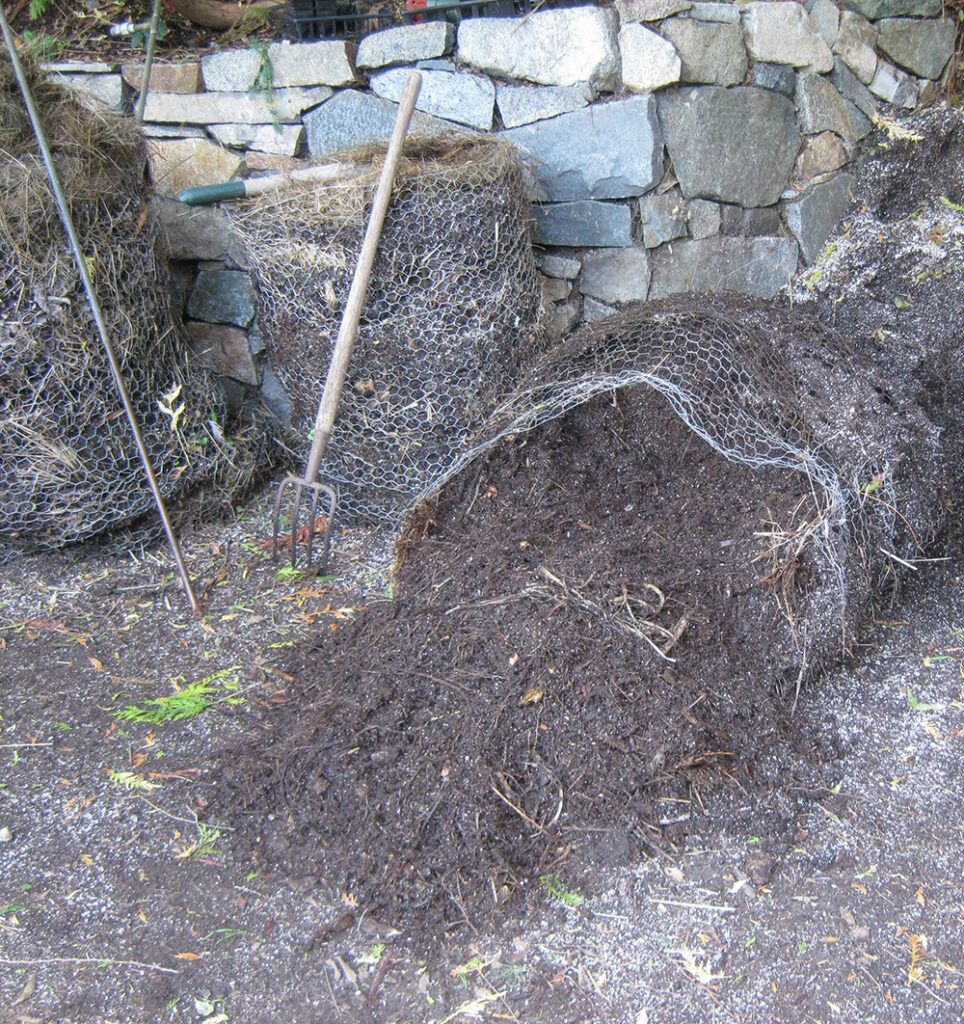
Plants
Oh, glorious seeds. What gardener doesn’t get all weak in the knees when the new seed catalogs come in?
Our eyes get all starry, and we just can’t resist buying some that we know might not grow where we are, or that nobody but you will even want to eat. And that is our right as gardeners. We grow what we want!
If you’re looking for some pretty in-depth information on various seeds that you think you’d like to plant, take a look here. Lots of great information.
Vegetables
Different vegetables provide our diets with different nutrients, so growing a variety of different families of veggies is important.
You’ll want to have some brassicas in there – broccoli, kale, cabbage, etc. – as well as root crops such as turnips, potatoes, carrots, and radishes.
And don’t forget your greens. Plant LOTS of greens. And the all important legumes! Peas and beans are fun for everyone to pick – especially kids! – and are healthy additions to the garden and the dinner plate. Plus, you can eat them either fresh or dried.
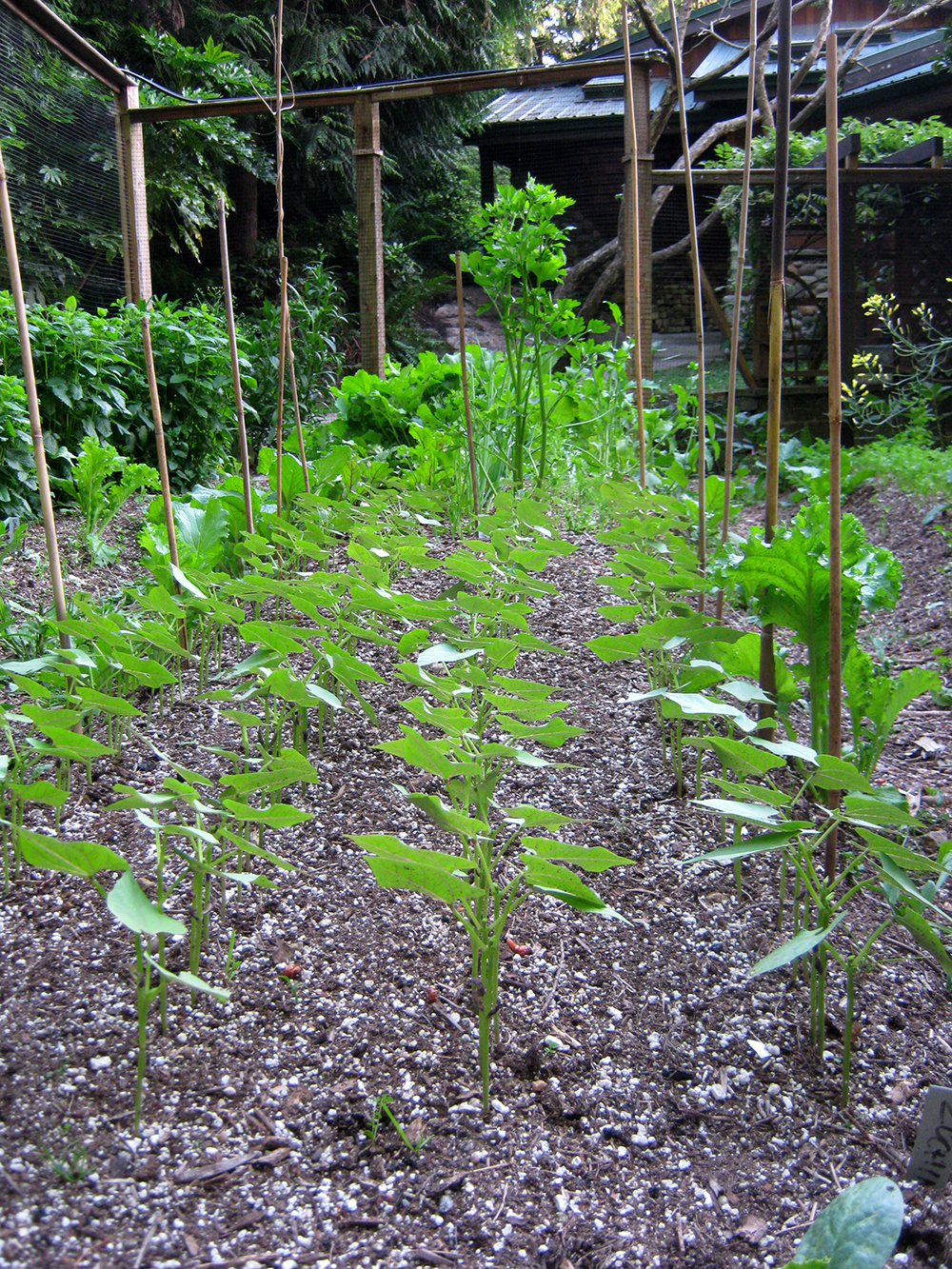
List of vegetables I grew in the garden last year
- Broccoli
- Carrots
- Beets
- Chard
- Kale
- Mustard
- Lettuce
- Radishes
- Arugula
- Turnips
- Leeks
- Black Turtle beans
- Snow peas
New ones I’ll be adding this year
- Rutabaga
- Potatoes
- Cabbage
- Garlic
- Zucchini (last year was a bust)
Companion planting
Although much of the companion planting information doesn’t have ‘scientific’ backing, observation and experiential data show that there are many instances where some plants can help others, and a few can hinder. It is worth experimenting with, to see what works for you in your garden.
Although I haven’t done any side-by-side experiments, I try to take the common companion planting knowledge into account when planning my garden.
Mostly I try to grow plants that attract beneficial insects such as lady bugs and pollinators, near the plants that need them. And I do tend to go a little overboard when it comes to planting flowers in the vegetable garden.
Herbs
Herbs are an excellent element to introduce to the garden. Aside from their tasty culinary uses – which are many – most herbs are also medicinal or otherwise healthy additions to our diets. They can also serve to attract certain beneficial insects, or repel unwanted pests.
I use herbs in a few different ways: as flavoring for savory dishes; as tea – fresh in sun tea during the summer – and in making infused oils for cooking, and for making my personal care products. I do love the calendula oil on my skin. So nice.
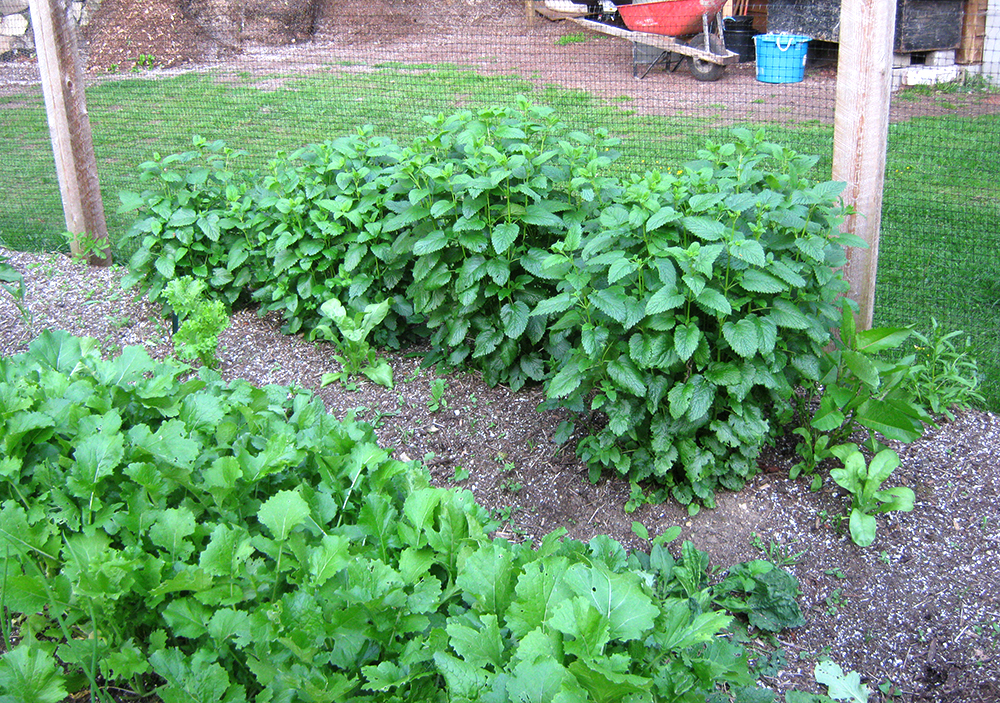
List of herbs I grew in the garden last year
- Lemon balm – culinary, tea, infused oil for skin care, glycerite
- Oregano – culinary, sun tea
- Rosemary – culinary, infused oil for skin care and culinary use, sun tea
- Thyme – culinary, sun tea
- Bee balm – sun tea
- Parsley – culinary, sun tea
- Plantain (foraged in the yard and garden) – infused oil for skin care
- Marijuana – infused oil for medicinal use (massage oil for aches and pains)
- Sage – culinary, sun tea
- Cilantro – fresh salsa!
- Summer savory – culinary: love it for cooking with dried beans
- Chives – lovely fresh herb; next year I’ll try drying some
- Chervil – sweet licorice flavor; reseeds quickly; flowers attract beneficial insects
You may notice that I put just about every herb in my sun tea, but I don’t say anything about regular hot tea. That’s because, oddly enough, I never drink it. I’m just not a hot beverage kind of girl. To be perfectly honest, I always burn my tongue! And I hate burning my tongue. So I leave it to cool down. And then it’s cold. So why bother?! HA!
New herbs for this year
This year or next year, I hope to add in a few new herbs; and try some that didn’t work out so well last year.
- Dill – planted in wrong place and it got over run
- Chamomile
- Basil – only grew some in the greenhouse
- Holy basil
- Garlic chives
- Lovage – I planted it last year; hoping it comes up again this year
Flowers
And let’s not forget the flowers, those bright jewels amongst the abundant greens of the garden. There are many edible and medicinal flowers that you can introduce to the garden.
Many flowers provide food or flavoring, as well as homes and food for beneficial insects; and they invite pollinators into your garden system.
List of flowers I grow
- Sweet Alyssum – sweet, sweet scent; very attractive to bees and other beneficial insects such as hoverflies; great ground cover
- Nasturtiums – attract bees and humming birds; edible leaves, flowers and green seeds
- Calendula – attract bees; edible petals; medicinal
- Marigold – repel soil nematodes
- Sweet peas – I grow these because I find the scent intoxicating, but they also attract bees and other insects
- Borage – These are the ultimate bee flower. They are always covered in bees and other pollinators. And the young leaves and flowers are edible.
- Wildflowers – I planted a mix of shade tolerant wildflowers from West Coast Seeds. They grow in a shady corner of the garden, and attract all manner of insects.
- Herb and vegetable flowers – I let vegetable plants go to seed because they are very attractive to beneficial insects; and because they are also tasty additions to salads and stir-fries – or just when grazing in the garden. So don’t be in a hurry to pull those plants out.
My garden was humming with bees all summer long. Sure, flowers can help repel garden pests and attract beneficial insects, but to me, a garden just isn’t a garden without flowers.
Flowers brighten and enliven the garden, and make it a lovely place to spend your time. And we know that the more time we spend in the garden, the healthier we and our gardens will be.
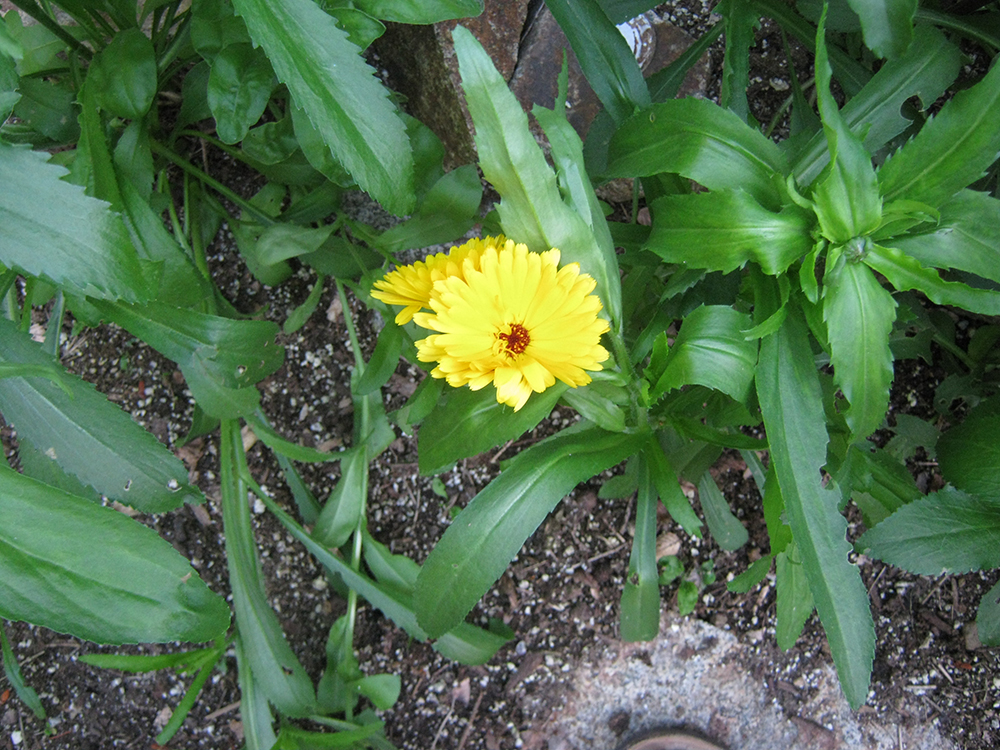
Trees and shrubs
I didn’t have any berries in my garden last year, but I’m hoping to start introducing them this year. Raspberries and strawberries are at the top of the list.
Of course, the blackberries don’t need any help growing here in the Pacific Northwest. They’ll be here forever.
The only trees and shrubs in the garden at the moment are ornamental. And I have no say in whether they stay or go, as this isn’t my property. But they have their good points, even if they aren’t productive, and they cast too much shade on the garden.
There is a magnolia tree, a lovely purple smoke tree, and another small tree that neither of us recognizes. And there are azaleas as well, which produce lovely yellow flowers that the bees love.
Robins built their nests in the magnolia tree last year. I loved watching them flutter down into the garden to forage for food for their little crews.
Having trees and shrubs near the garden afforded me much entertainment watching the birds hopping around looking for tasty bugs for dinner.
Trees and shrubs in the garden can serve many purposes. The first is obviously the fruit, nuts, or berries they grow. Lots of possibilities there. But that’s not the only service trees and shrubs can provide.
Having trees or large bushes in or around the garden provides shelter and nesting places for birds. It makes them feel safe. And what do birds do so well? They eat insects!
Yes, they might eat some beneficial insects, but they eat a lot of pest insects too. And then they poop out a very nutrient rich manure back into the garden. It may not seem like a lot, but it all adds up!
Growing trees and shrubs around the garden also helps us create that all important ‘edge’ effect. Read more about that in the post Permaculture Principle #11 – Use Edges and Value the Marginal.
Trees can provide shade, a wind break, and a place for vining plants such as grapes to grow. They also shed their leaves in the fall, laying down a lovely mulch for the soil.

Cover crops
Cover crops – also sometimes called ‘green manure’ – are also an excellent element to add to the garden. They can be grown in the fall and left to stand through winter to hold nutrients in the soil, and prevent erosion.
They are also an excellent way to add organic matter and nutrients to the soil, by either chop and drop, or using the plants in your compost. You can grow cover crops that are nitrogen fixers, or which create a lot of bulk organic matter, or a mix of both.
I didn’t get a chance to plant any cover crops in the first year of this garden, but I plan on incorporating them into the garden this year. Instead, I left all the plants that were in the garden at the time when the sun disappeared, and I’m hoping that that helped a bit.
The plants I left in the ground didn’t do much in the way of growing, but hopefully they helped keep some nutrients from washing away, and will release them into the compost soon.
This year I will underplant cover crops for some plantings, and see how that works. Our growing season is long enough here on the Sunshine Coast, but our shaded yard makes it quite a bit shorter.
So I’d need to get my cover crop seeds in as early as I can. This will be possible with tall plants such as broccoli and tall kales. I’ll plant the seeds a few weeks before the sun disappears, to give them a good start.
Then I can harvest the tall plants, and let the cover crop stand until I need the space in the spring. Then I’ll cut it down and add it to the compost.
I’m hoping to do this over most of the garden. Although many plants won’t work for underplanting – carrots for one – I think it will work with many. I’ll experiment with bigger root crops such as rutabagas and turnips.
Seeds Now has a nice selection of cover crop seeds to choose from.
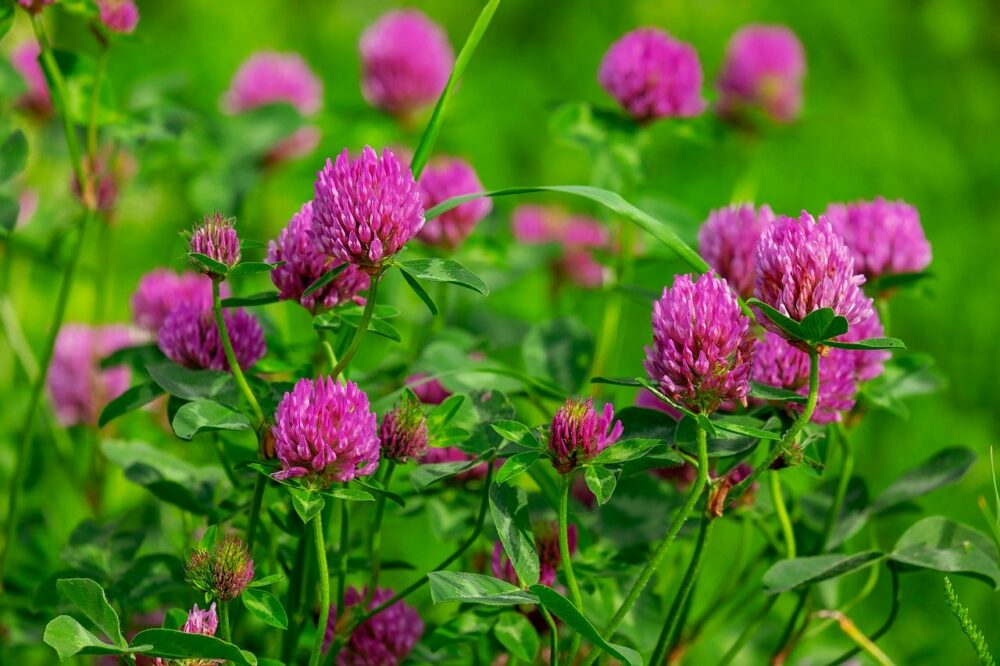
Mulches
Mulches are an element that can’t be left out when talking about the elements of a garden. Mulches protect the soil from erosion; keep the soil moist during dry periods; add organic matter to the soil, and more. Just another really helpful tool to use in your permaculture garden.
On the other hand, if you live in a damp climate where slugs proliferate, mulches could be a problem, as they serve as happy homes for the marauding beasties. Make sure you know your pests, and which ones are likely to take refuge in a thick layer of mulch.
Mulches to use in the garden
- Compost
- Grass clippings
- Straw or hay
- Wood chips
- Chopped up leaves
Structures
Fences & Gates
Fencing can serve a purpose beyond keeping animals out of the garden. We don’t always like to fence off the garden, but if production is important to you, then you will probably need to put up a fence of some sort.
Where we live, if we don’t fence off a garden the deer will mow it down in no time. Not to mention the dog loving to walk in the beds. But fencing can also be a helpful element in the garden.
A fence can act as a wind break, sheltering tender plants from getting blown down by winds. It can also be an excellent trellis, to support peas, beans, grapes, or whatever climbing plants you want to grow.
You may need a way to keep ducks or chickens in parts of the garden for fall or spring clean up, so movable fencing can be helpful within the garden. A fence can also support overhead netting to keep birds out of the berry patch if needed.
In our garden, I grew sweet peas up the fence. And there is a trellis over the gate, which I used to grow the Scarlett runner beans on. It looked really nice. It would also be a lovely place to grow a grape vine, so I’m going to try that some year. Lots of options that are both beautiful and functional.
Birdhouses and feeders in and around the garden are a great way to attract the services of our feathered friends, such as eating insects, and dropping off nutrients.
Let them nest, and don’t sweat a few nibbled leaves and seeds, or stolen earthworms. You can protect your plants and seeds with row cover, but don’t keep the birds out.
Birds can be great assets in the permaculture garden; and birdhouses and bird feeders can be quite attractive. I’m thinking of making ones that look like fairy houses . . .
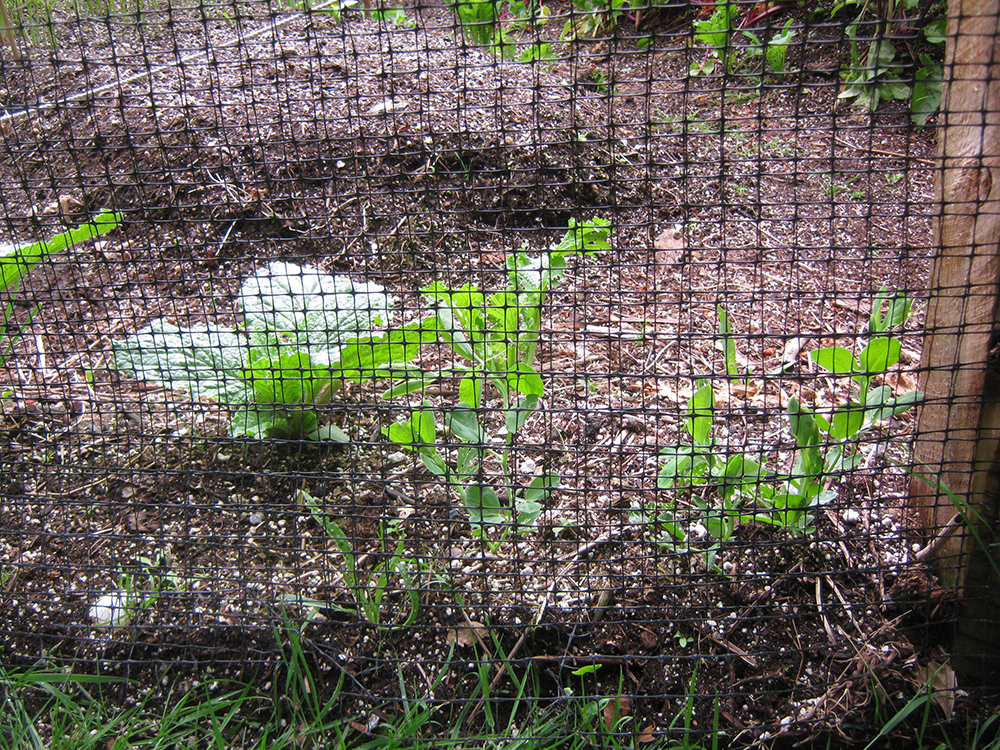
Features
Water
A small pond or other water feature can be an amazing asset in a garden area. Providing water for critters such as frogs, toads, lizards, bees, birds, and dragonflies can really help with pest problems.
Even a pot of water, or a shallow tray will be helpful. Just ensure that the critters have somewhere to stand while drinking the water by placing stones or bricks in the water that are just at or below the surface.
A waterfall is a lovely thing to have in the garden. Its tranquil sound is quite soothing, and if it’s big enough it can actually have a cooling effect.
A larger pond with fish in it can be a source of fertility for the garden. And fish will eat mosquito larvae! nom nom nom
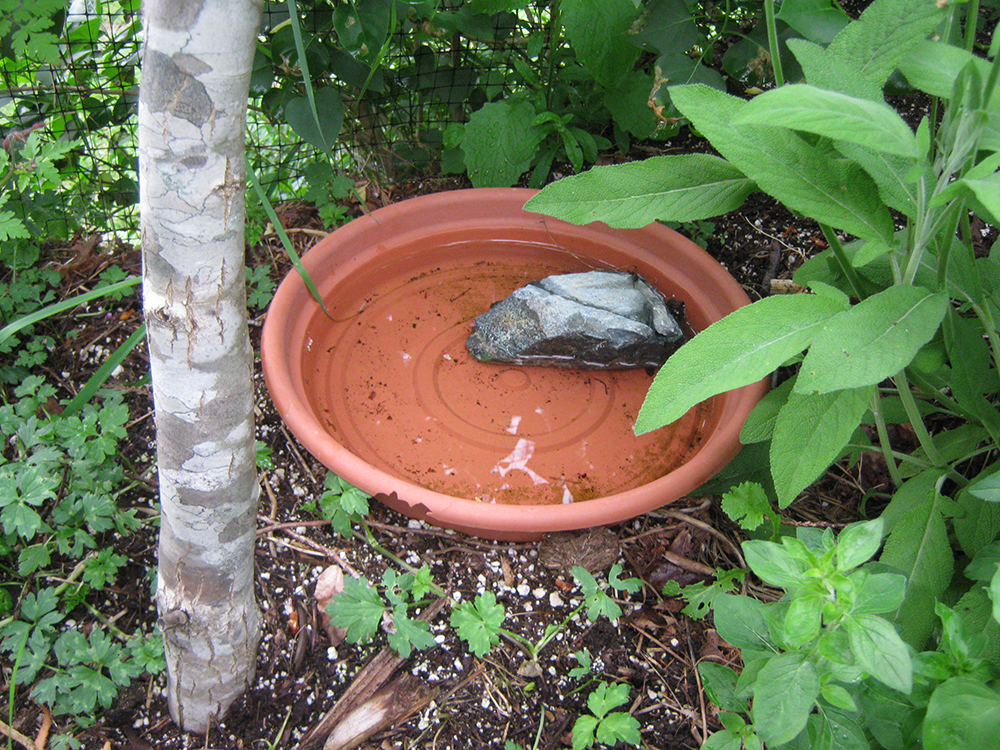
Rock piles
A pile of stones can attract beneficial animals into your garden. Garter snakes really like a nice pile of stones, and may come live in your garden and dine on slugs. Lizards and toads will also like it in those rock piles.
A rock pile doesn’t have to be haphazard or messy. You can build small rock retaining walls or raised beds, or a bench supported by stacked stones so that it serves a dual purpose. Be creative.
Decorative pieces
Of course, you can also add some pretty things into your garden as well. Statues, pots, metal sculptures and trellises, and other bits and pieces that catch your eye can enhance your enjoyment of your garden.
A funky painted chair in the shade can not only look lovely, it can entice you to spend more time just sitting in the garden. And the more time you spend in your garden, the better you’ll get to know it, and learn what it needs and what it offers.
The most important element in your garden is you.
A permaculture garden is a living thing. It evolves with the gardener, changing season by season, and year by year. There are many elements that can be added to a garden to make it more successful, and more ‘you’.
The more elements you can incorporate, the stronger the garden will be. And don’t forget that comfy chair, enticing you into the garden to sit and contemplate.
Health, Hope & Happiness
Tracy
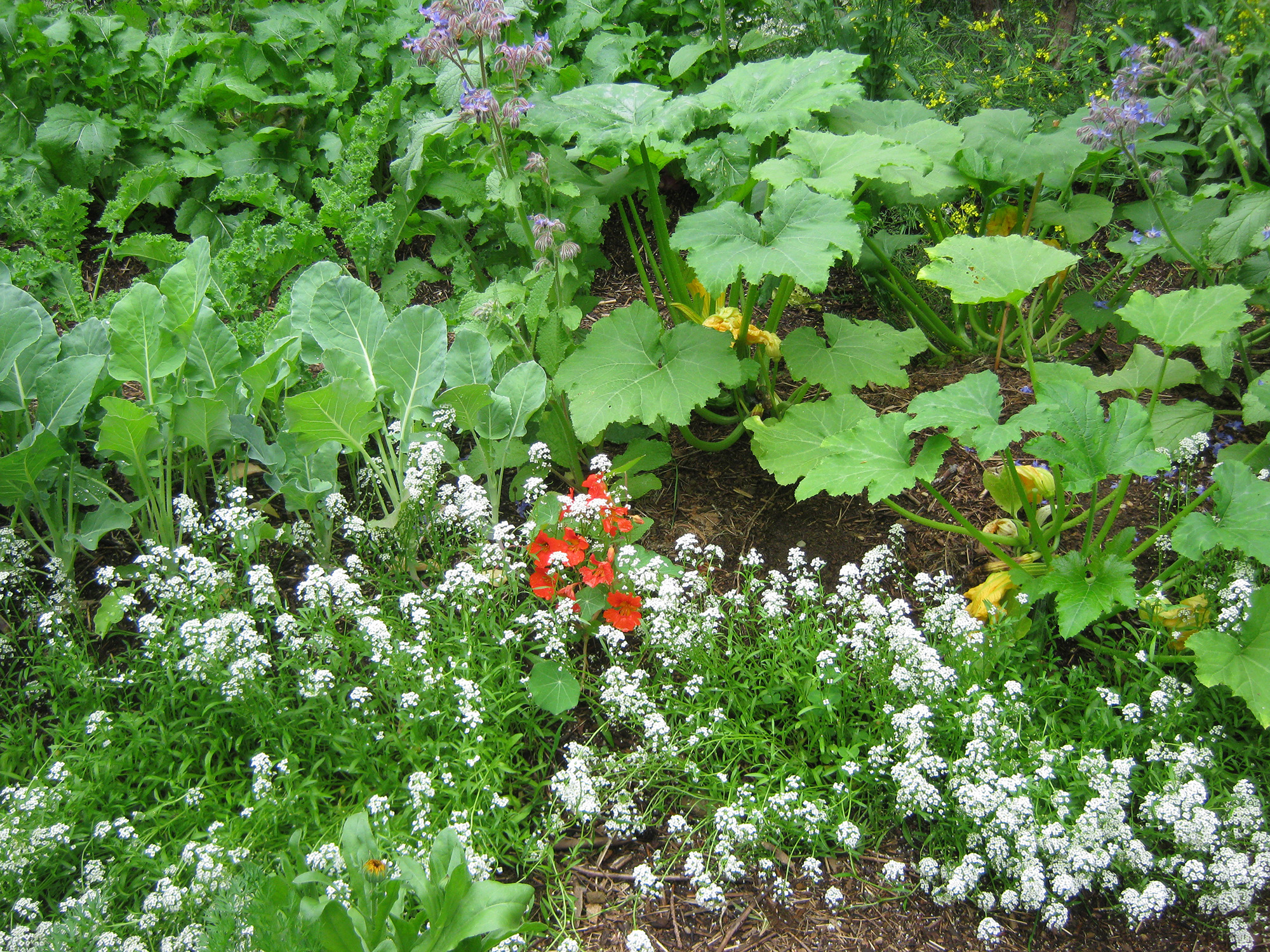

Great ideas, would love to see pictures of your garden and how it is plotted out
Thank you!
As a matter of fact, I am in the process of writing that article – How to build a permaculture garden. In it, I will share my own garden layout and planning process.
Thanks for reading and commenting.
Another great post Tracy!
You really do put everything in your sun tea! I will have to try that. One of my favorite herbs is lemon thyme. I just LOVE the lemony scent and taste.
I thought as I read this that I was lucky we did not have slugs were I grew up. We could garden without that hassle. Later when we moved to the coast there were slugs everywhere! They get huge in Valdez. When they stretch themselves out to climb up something they would be about 6 inches long!!! We had tons of smaller slugs when we moved here to Anchorage as well (also on the coast). The hot dry summers and very cold winters made my home growing up inhospitable for them I guess. As long as you have tons of water to irrigate it was a great climate for gardens though since the long, sunny days (18-20 hours of sunlight in the middle of summer) were great!
We grew many different veggies, herbs and flowers as well as berries. We had quite a few first place ribbons at the state fair. We had several grand champions as well for (at the time) exotics such as Egyptian walking onions and Jerusalem artichokes.
Jessica
Yes, I put everything but the slugs in my sun tea. Now I’ll have to get some lemon thyme! I love thyme, so a lemon one would be fantastic. I tried a lime basil last year that was delicious, and smelled so good.
I grew up in the northern interior of British Columbia, same long days, same dryness. As much as I don’t enjoy slugs eating my garden, I very much appreciate everything else. It’s all a balance.
Thanks for you kind comments. Enjoy!
Cheers
Tracy
I also love your advice about the cardboard and adding compost on top. I will have to try that here where we have rocky soil that is a pain for gardening. Thank you!!